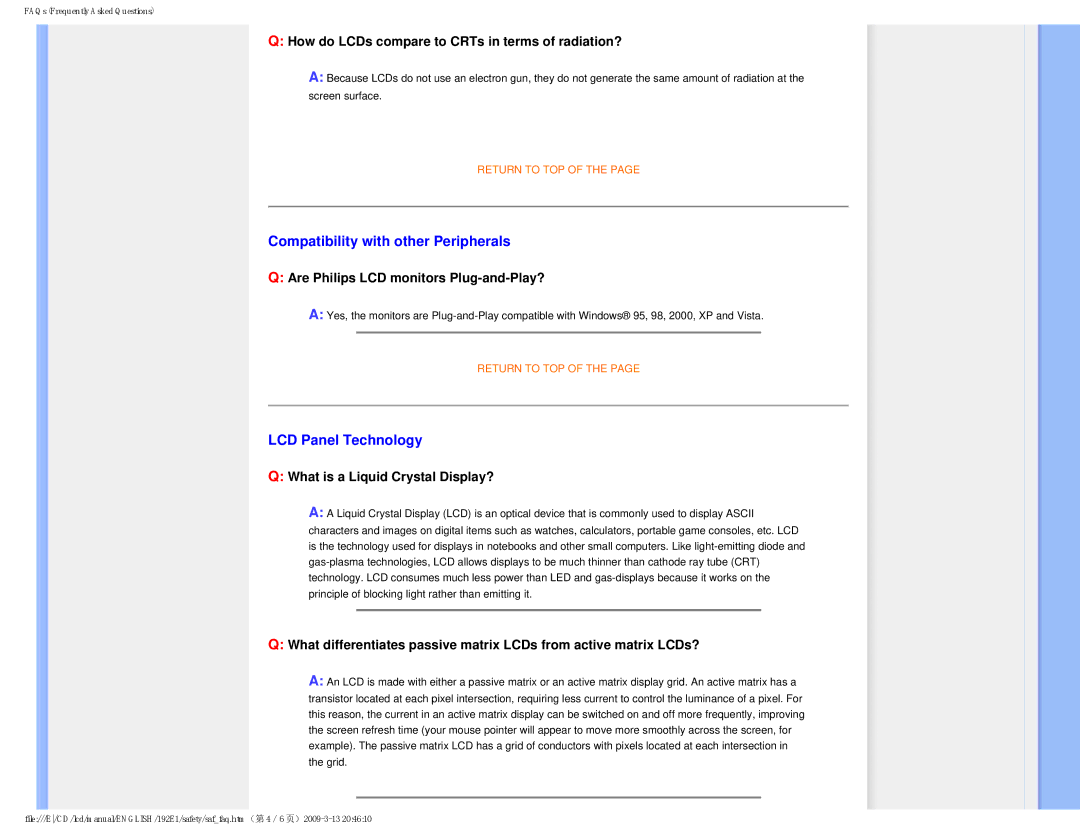
FAQs (Frequently Asked Questions)
Q:How do LCDs compare to CRTs in terms of radiation?
A:Because LCDs do not use an electron gun, they do not generate the same amount of radiation at the screen surface.
RETURN TO TOP OF THE PAGE
Compatibility with other Peripherals
Q:Are Philips LCD monitors Plug-and-Play?
A:Yes, the monitors are
RETURN TO TOP OF THE PAGE
LCD Panel Technology
Q:What is a Liquid Crystal Display?
A:A Liquid Crystal Display (LCD) is an optical device that is commonly used to display ASCII characters and images on digital items such as watches, calculators, portable game consoles, etc. LCD is the technology used for displays in notebooks and other small computers. Like
Q:What differentiates passive matrix LCDs from active matrix LCDs?
A:An LCD is made with either a passive matrix or an active matrix display grid. An active matrix has a transistor located at each pixel intersection, requiring less current to control the luminance of a pixel. For this reason, the current in an active matrix display can be switched on and off more frequently, improving the screen refresh time (your mouse pointer will appear to move more smoothly across the screen, for example). The passive matrix LCD has a grid of conductors with pixels located at each intersection in the grid.
file:///E/CD/lcd/manual/ENGLISH/192E1/safety/saf_faq.htm(第 4/6
